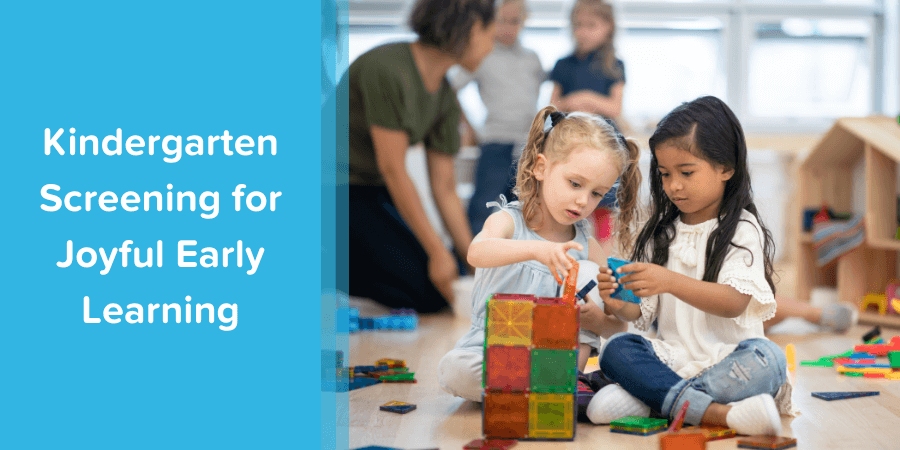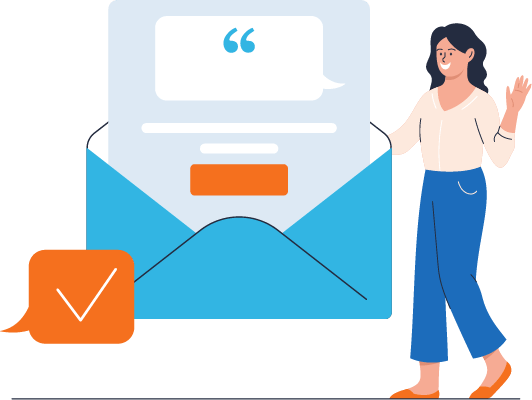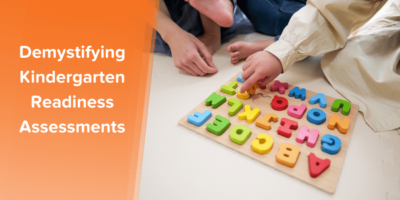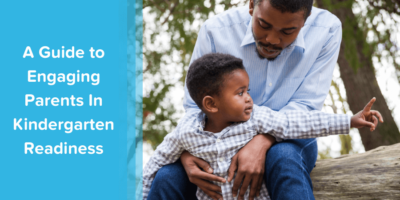by ParentPowered contributing author Curran Mahowald, M.A. Cognitive Science in Education
Educators and families both want children to enter kindergarten ready to learn. Because children’s early learning experiences and environments vary widely, it is not safe to assume that every new kindergarten student arrives equally prepared to benefit from school-based learning opportunities. In light of this wide variation of child development, many ways to measure children’s readiness for school — including kindergarten readiness checklists — have emerged.
Interest in implementing a kindergarten readiness assessment (KRA) is increasing for education leaders across the country. District administrators and state policymakers alike are interested in this type of assessment tool for several reasons.

- Kindergarten screening can provide valuable information about the students who are about to join the school community, which can be used to strengthen the transition to formal school.
- They can help educators understand how to better support children’s development, both on the individual level and an aggregate level.
- They can help educators identify children with developmental delays or disabilities and connect them with the appropriate services. Note that most screeners are not sufficient for diagnosing learning disabilities, but may prompt educators to seek further evaluation for the child from a relevant early childhood professional.
Overall, education leaders recognize that kindergarten screenings can help them be ready to serve children and families, and so they invest significant time into kindergarten screening procedures. One school district might do 100 screenings per year, and each screening usually takes at least 20-30 minutes. For this reason, it is worth exploring the purpose of kindergarten screenings, their validity in predicting learning success, and best practices for selecting and implementing kindergarten screeners.

The purpose of kindergarten screening
Use of kindergarten screeners varies widely across the country. Every state has different laws surrounding kindergarten screening measures. Some states require every child to be tested; others require a sample of children to be tested, or have no requirement. Some states forbid kindergarten readiness assessments from being used as accountability measures or to deny students entry into kindergarten. Some even regulate the communication of results to caregivers.
In general, kindergarten screeners probe children’s language development, motor development, cognitive development, and overall health. They are used to make school entry decisions, identify children for gifted and talented programs, and identify children who could benefit from additional services (for example, providing early phonological awareness intervention for children at risk for dyslexia, or providing hearing aids for children who are hard of hearing).

There is a growing understanding that children’s kindergarten readiness is the shared responsibility of schools, families, and the community. The purpose of kindergarten assessments is to inform this team of caring adults about ways to make sure a child’s days in kindergarten are full of engaged learning and play.
Best practices for using kindergarten readiness assessments
Low stakes
Kindergarten readiness assessments should be used consistently but without high stakes for children, teachers, or schools. These are formative assessments, which can indicate how to best design appropriate learning, rather than summative assessments that reflect accomplishment. Kindergarten screeners should not be used to weed out children who are less likely to score well on standardized assessments. The purpose of a kindergarten screener in an equitable education system is to determine the best way to provide a high-quality learning experience to each child based on their individual strengths and needs.
Inform resource distribution
The results of kindergarten readiness screeners can be used in decisions about the allocation of resources on the community and individual levels. According to the authors of a 2000 survey of kindergarten readiness practices, “[s]creening activities are of no value unless they provide school personnel with valid information that ultimately leads to the provision of services for students with special needs” (Costenbader, Roher, and Difonso, 2000).
Inform learning design
Once teachers know where their students are in their language skills and social and emotional development, they can plan appropriate centers, games, lessons, and books. Good academic instruction for early learning should be meaningful and joyful for every child.

Just a snapshot
Educators are advised to interpret the results of a kindergarten screener as snapshots in time of current abilities. A child’s KRA might be their first formative assessment, but it shouldn’t be the last. Ideally, teachers chart progress over time and celebrate with families how much the child has learned by the end of kindergarten.
Knowledgeable teachers
Each kindergarten teacher administering the assessment should be knowledgeable about child development and be familiarized with the screening activities. This requires ongoing training and support from the school, not only for administering the assessment but also for making use of the results. They should also find out about children’s cultural and linguistic backgrounds whenever possible.
Meets children where they are
Procedures should be developmentally appropriate for young children and take place in an environment with which they are familiar. Otherwise, children may underrepresent their abilities due to the emotional and cognitive load of a new place, new people, and new tasks. In fact, the best assessment doesn’t even feel like an assessment to the child because it takes place within the context of normal interactions with a caring and familiar educator.

What makes a good kindergarten screener?
For a school willing to spend the time and resources to administer a kindergarten readiness assessment, it is important to select one that contains appropriate content, is standardized, is reliable and valid, is low cost, and is easy to administer and score.
A good kindergarten readiness assessment is:
Useful for informing classroom instruction. There should be some alignment between what is tested in the assessment and what is taught in the kindergarten curriculum. The kindergarten readiness assessment should also have some self-expressive or open-ended tasks to allow teachers to get to know the child better. Parents are also a key source of information on the child’s developmental progress. Incorporating parent-reported measures can help create a more well-rounded picture of the child’s readiness for various educational activities.
Simple and clear enough to be used consistently by educators. Kindergarten entry assessments have the potential to provide more systematic feedback to teachers than what they would glean from casual observations. It’s important for educators to implement these tools with fidelity with all children or a representative sample of children, depending on the school’s goals and strategy.

Inclusive. Children of all different abilities, socio-economic backgrounds, languages, and cultures should be able to access the content and demonstrate their skills. Children show their strengths when they feel confident. The assessment should allow for children to be observed in a variety of settings with a variety of tasks to increase the opportunities for them to demonstrate their abilities. In a way, all assessments are language assessments because a child must understand the instructions and communicate their responses to the task. This can artificially deflate scores for children who are tested in a language they are less comfortable with.
Covers the domains that matter. Definitions of kindergarten readiness vary by school, but the consensus by research is that executive function, socio-emotional skills, physical well-being, and some early academic skills, especially in the language domain, best predict later academic success. A child’s approaches to learning are as or more important than specific academic skills like counting or identifying letters. Children’s attitude about school makes a difference in how well they’re able to learn.
Families as Partners in School Readiness
Children’s rapid development in the early years is influenced by their environment, which includes not only school- or center-based educational settings but also the caregiving and nurturance they receive at home and with their families. As children’s first teachers, parents and caregivers have important roles to play in all parts of the early childhood assessment process.
Parents are natural observers of their children’s behavior, and what they observe affects the nature and level of support and challenges they provide in response. For example, when a father sees his infant daughter begin to walk while holding onto furniture, he might “assess” that she is growing stronger and more confident in walking. He might then extend his hands a small distance from her to encourage independent walking.

This feedback loop plays out at many levels of development, and parents’ observations can be combined with teachers’ assessments to form a more comprehensive snapshot of early childhood development.
Ideally, parents not only supply reports of their child’s abilities demonstrated at home but also learn the results of the assessment. They can use those results to better understand and support their child’s development. Research has shown that when parents receive information tailored to their child’s unique developmental journey, their children’s learning accelerates.
In a 2018 study, a group of parents were randomized to receive either the traditional ParentPowered program or a version of the program that was personalized and differentiated based on their child’s performance on a formative assessment. Both groups received text messages with facts and tips for supporting children’s early language skills, such as rhyming and identifying letter names and sounds. But the texts to the second group also informed parents of the level at which their child performed on a given skill and included a suggestion for an activity to support the child in reaching the next level.
The results? The kindergarteners whose parents received the personalized and differentiated version were 63% more likely to move up a reading level!
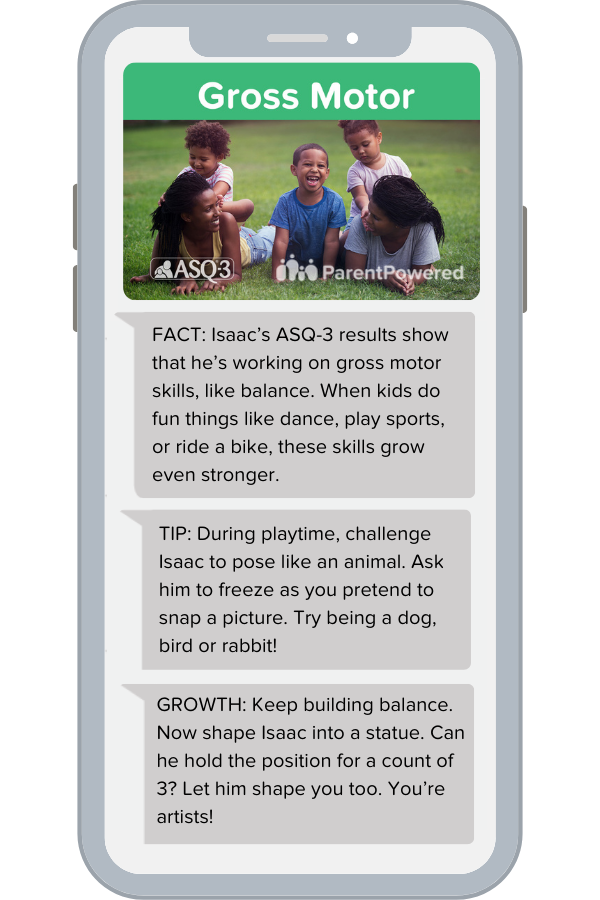
This highly effective family engagement program has been further developed into ParentPowered Personalized Learning, which leverages a child’s results on the Ages & Stages Questionnaires®, Third Edition (ASQ®-31).

Resources to learn more about kindergarten screening
Ready to review some off-the-shelf options for kindergarten readiness screeners? This brief from the Learning Policy Institute contains a description o fsix popular assessments and their evidence bases.
Compare kindergarten readiness assessment policies across the country with this list of state requirements from the Education Commission of the States.
Peruse a case study from a NAEYC article to learn principles for effective kindergarten readiness assessments.
Want more examples of kindergarten screening in action? Take a look at these case studies from the Department of Education and SRI about implementing kindergarten entry assessments.
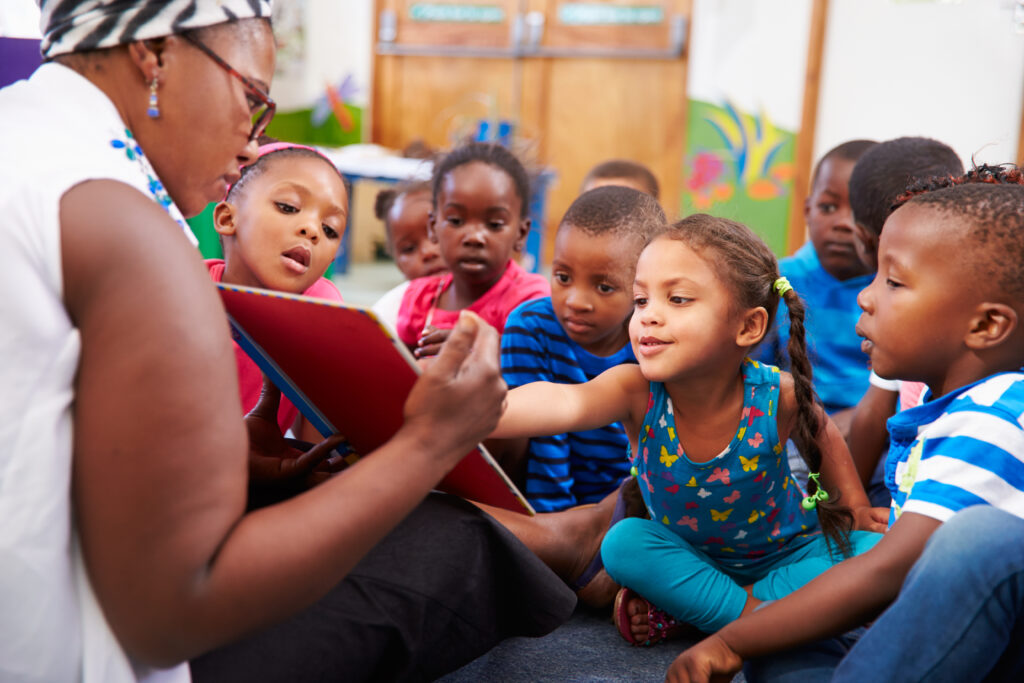
Read this article from NAEYC for specific examples of how educators meet students where they are with kindergarten readiness assessments, including dual language learners and students with disabilities.
A helpful glossary of relevant terms like social indicator, reliability, and validity, can be found at the end of the 1998 Principles and Recommendations for Early Childhood Assessments.
Footnotes
1ASQ is a registered trademark of Paul H. Brookes Publishing Co., Inc. The screener and the texts cover five domains: Communication, Gross Motor, Fine Motor, Personal-Social, and Problem-Solving.

About the author
Curran Mahowald is a former high school language teacher turned education research advocate. In addition to having worked at ParentPowered, she has also designed parent-facing informational materials at Oakland Unified School District and currently works on improving national research-to-practice infrastructure at the Annenberg Institute for School Reform at Brown University. Curran holds an M.A. in Cognitive Science in Education from Teachers College, Columbia University and B.A.s in Linguistics and French from the University of Southern California.

